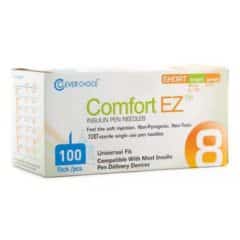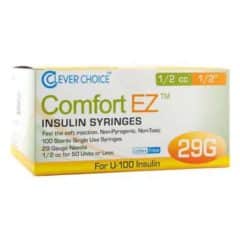- Getting started is easyAre you ready to become an ADS customer and receive your supplies at home every 90 days? Joining ADS is easy!
- Current PatientsAt ADS we obsess over the customer experience. Browse our helpful links and FAQs or send us an email at [email protected].
We are here to help! - Putting Patients and Healthcare Professionals FirstExperience the difference by contacting our contracting team at 1-760-579-7202 to discuss details of a partnership and/or refer a patient.
- Industry experts since 2002.The ADS Supply Group’s vision is to be the nation’s premier diabetes equipment supplier by wowing our customers and providing best-in-class service to patients.
- Living with DiabetesTips on lifestyle, diet, and emerging technologies all geared towards those living with diabetes.
Diabetes Products.
Diabetes Testing Supplies
If you purchase diabetes testing supplies from Advanced Diabetes Supply, you’ll get more than just high-quality test strips, lancets, and other products. We pride ourselves on our commitment service and offer free shipping with rapid turnaround times on every order.
Managing diabetes can be tedious, which is why we also send you a reorder reminder 14 days before you’re eligible to place another order—ensuring you never run out of vital supplies.
ADS is proud to sell testing supplies for diabetes from leading brands like True Metrix, Contour, and OneTouch. Take a look at our full diabetes supply lineup to get started!
How Diabetes Test Strips Work
Diabetes test strips make blood glucose testing easy for people living with diabetes.
These products are essentially plastic strips coated with chemicals and a thin layer of gold. When you insert a test strip into a glucose meter and apply a drop of blood, the strip absorbs the blood and converts its glucose to electricity.
Your test strip then transmits the resulting electrical signal to your glucometer. Finally, your glucose meter calculates your blood sugar level based on that signal’s strength.
While using test strips, be sure to:
- Avoid testing blood sugar with expired/damaged strips
- Purchase the right brand of strips for your glucometer
- Calibrate or code new boxes of strips (if necessary)
- Protect stored strips from moisture, heat, and humidity
Choosing a Lancet Gauge Size
Those living with diabetes should know the correct lancet needle gauge for their needs.
For example, small needles typically cause the lowest amount of pain. However, these needles aren’t ideal for people with rough or thick skin.
While you might assume larger needle gauges equate to larger needles, that isn’t the case. The higher this number is, the smaller and thinner a lancet’s needle will be. That means 30 gauge lancets have smaller needles than 28 gauge lancets.
It’s also wise to remember that a needle’s depth is separate from its gauge. The former measurement indicates how deep a needle goes, as expressed in millimeters.
These days, lancets are commonly available in needle gauges 28 and higher. To get the right lancets for your situation, purchase these diabetic testing supplies from ADS!
Find Diabetes Testing Supplies at Advanced Diabetes Supply
Advanced Diabetes Supply® has been one of America’s most trusted source of diabetes testing supplies for over two decades. Members of ADS enjoy perks like rapid turnaround times and industry-leading customer service. ADS is accredited by several major organizations, including ACHC, NABP, and URAC accredited. For support diabetes testing supply support, call an ADS Customer Care Specialist at 866-422-4866 or email your questions to [email protected].
Filter By:
- Abbott (8)
- Bayer (3)
- BD (2)
- Clever Choice (2)
- Dexcom (3)
- Embrace (1)
- Eversense (2)
- Humalog (1)
- iLet Bionic Pancreas (1)
- Inpen (1)
- Medtronic (9)
- Nipro Diagnostics (1)
- Nova Biomedical (3)
- Omnipod (2)
- OneTouch (4)
- Pharmacist Choice (3)
- Prodigy Diabetes Care (4)
- Simple Diagnostics (1)
- Tandem (9)
- Trividia Health (2)
- True Metrix (1)
- Unistrip (1)
Showing 5-6 of 20
Frequently Asked Questions
Diabetes Testing Supplies
Not all diabetes testing supplies require a prescription from your doctor. Products like test strips, blood glucose meters, and lancets do not require a prescription. Continuous glucose monitors currently require a prescription from your doctor. Diabetes patients can buy diabetes testing supplies like test strips over the counter. However, check with your insurance to learn what coverage is available for these supplies.
Yes, Medicare Part B covers diabetes test strips as durable medical equipment. This coverage also applies to other testing supplies for diabetes, like control solutions and lancets.
Lancets should be replaced after a single use. If you reuse a lancet, you could suffer from increased finger pain and serious health risks.
Diabetes test strips are small plastic strips used in blood sugar testing. While using these diabetic testing supplies, put your test strip into a compatible glucose meter. Then, apply a drop of blood to your test strip to get a blood sugar reading.
The American Diabetes Association suggests the following targets for most nonpregnant adults with diabetes:
Before a meal (preprandial plasma glucose): 80–130 mg/dL.
1-2 hours after beginning of the meal (postprandial plasma glucose): Less than 180 mg/dL.
Also, more or less stringent glycemic goals may be appropriate for each individual.

